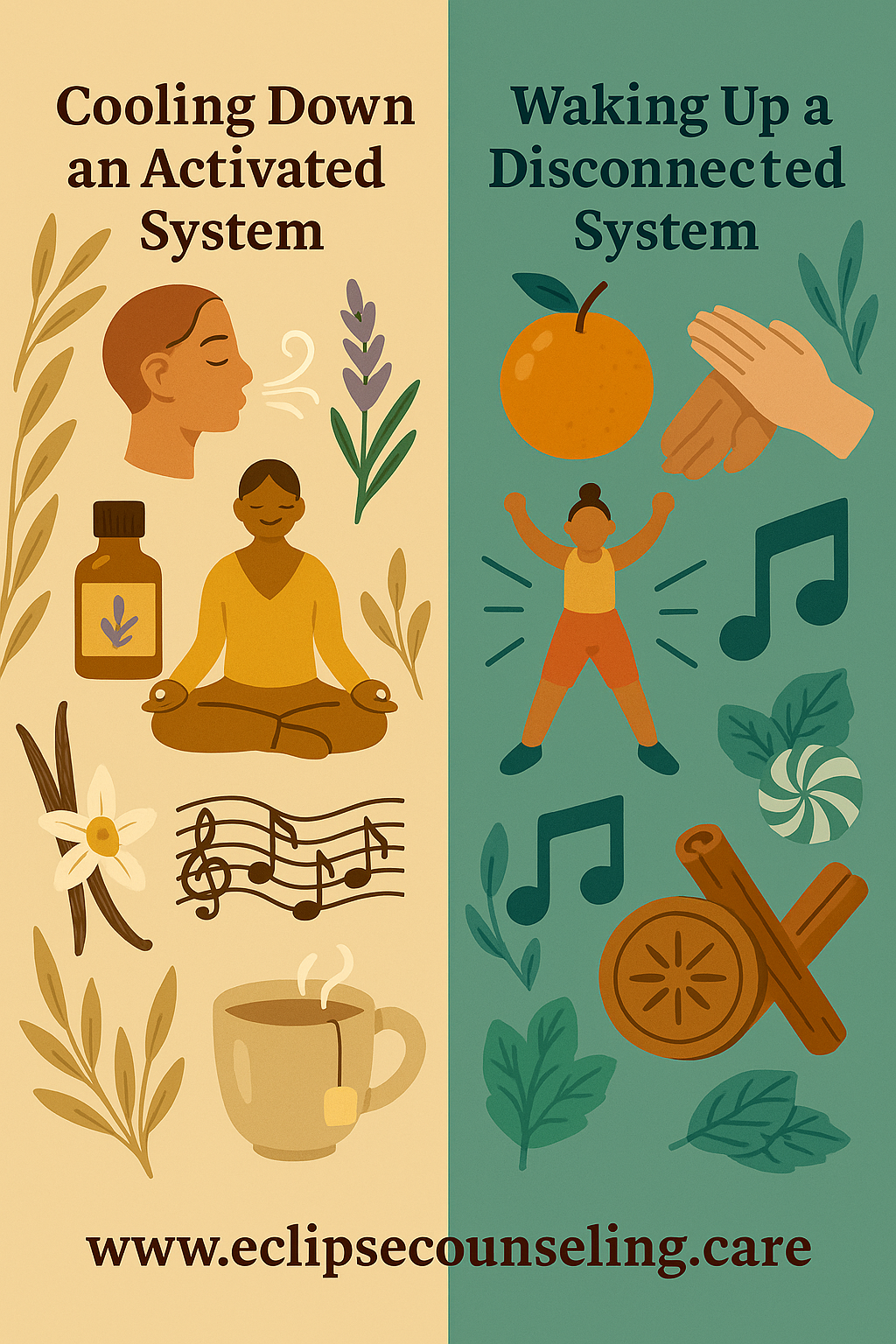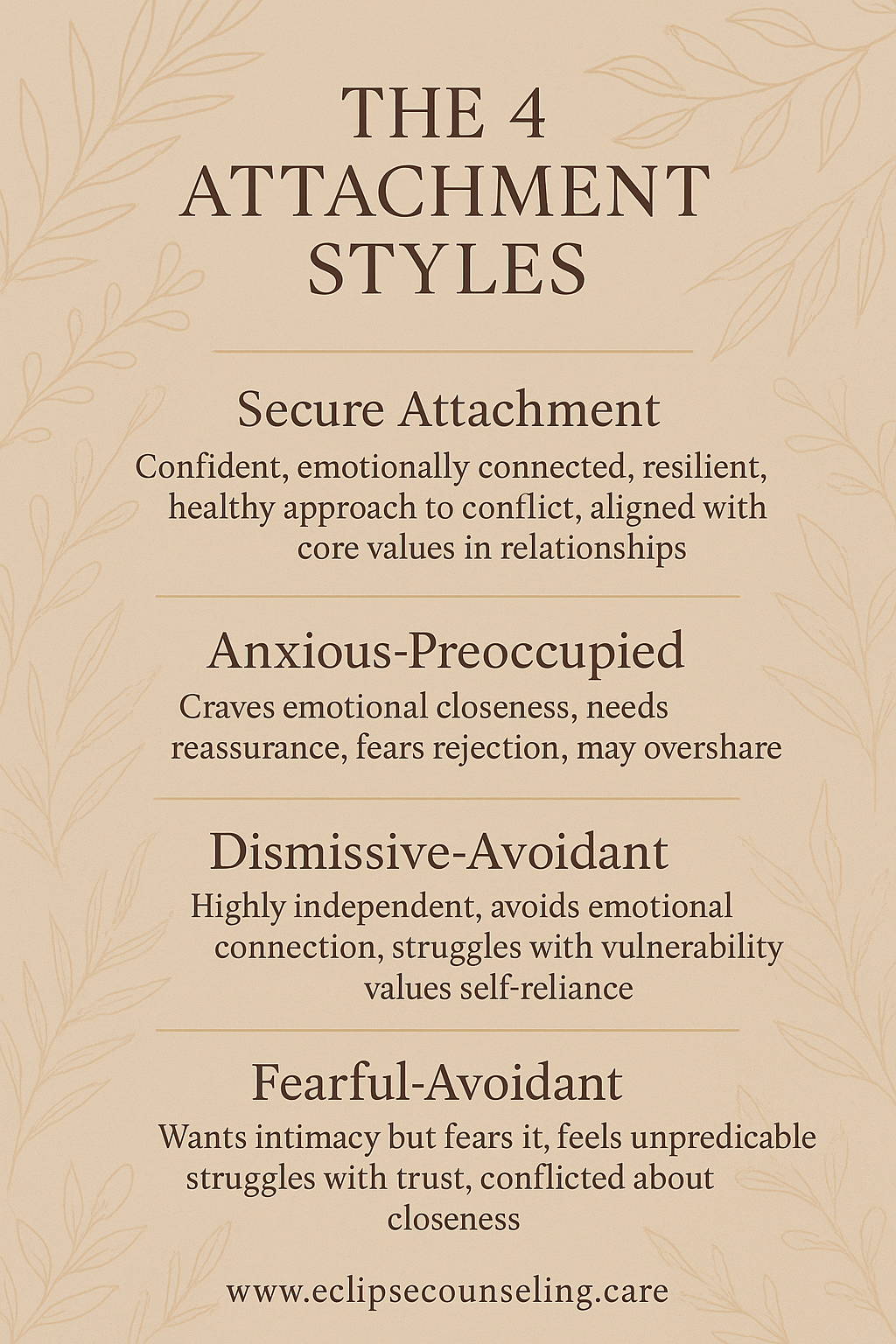Understanding Your Nervous System: Why Breathing Exercises Backfire
Ever tried a breathing exercise and felt more anxious? You're not alone—and you're not broken. Learn why traditional coping skills sometimes backfire and discover the zone-specific strategies that actually work for your nervous system.
Have you ever tried a breathing exercise and felt more anxious? Or maybe you started to get that out-of-body feeling (hello, dissociation) but didn't know how to bring yourself back?
If so, you're not alone—and you're not broken. Your nervous system is actually doing exactly what it's designed to do.
Your Nervous System: Your Personal Security Guard
Our nervous system is a highly intelligent evolutionary mechanism that works tirelessly to keep us alive, even in ways that may not make sense in the moment. It functions by constantly adapting our physiology to our environment so we can respond to different types of threats, whether those threats are real or just perceived as dangerous.
But here's what most people don't realize: not all nervous system responses require the same approach to healing. Using the same coping strategies for every uncomfortable feeling is like trying to eat soup with a fork. Technically possible, but not very effective.
Meet Your Three Nervous System Zones
I want to help you map out what's happening in your body by understanding what's going on internally. Let's dive into Polyvagal theory, which explains that our nervous system operates in three distinct states. I like to think of them as zones:
Ventral Vagal State (Green Zone): This is your window of tolerance, where you feel regulated and safe in your body. Here, you can access a sense of connection to yourself and others.
Sympathetic State (Red Zone): This is hyperarousal, where your sympathetic nervous system remains activated, preparing you for fight or flight responses.
Dorsal Vagal State (Blue Zone): This is hypoarousal, where your parasympathetic nervous system takes over, leading to freeze, fawn, or collapse responses.
When we become dysregulated or feel unsafe, we leave our green zone and enter either the red zone (hyperaroused) or blue zone (hypoaroused), depending on how our individual nervous system typically responds to stress.
Understanding Zone Cycling
Here's something important to know: you don't necessarily stay in one zone all day. Many people experience "zone cycling," where they bounce between red and blue zones, sometimes rapidly. You might start the day in red zone (heart racing, mind spinning with anxious thoughts) then crash into blue zone by afternoon, feeling numb and disconnected.
This cycling can happen within hours or even minutes. Someone might experience a panic attack (red zone) and then feel completely shut down and emotionally unavailable afterward (blue zone). This is actually a normal protective response. When the red zone activation becomes too overwhelming, your nervous system may flip into blue zone as a way to escape the intensity.
Understanding this cycling is crucial because it means you might need different strategies throughout the day, or even throughout a single difficult moment as you move between states.
Why Traditional Coping Skills Sometimes Backfire
Before we dive into identifying your zone, let's talk about why that breathing exercise might have made you feel worse. It's not because you're "bad at relaxation" or "doing it wrong." It's because many common coping strategies are designed for a regulated nervous system, not a dysregulated one.
Take box breathing, for example. You know, the 4-4-4-4 method where you inhale for 4 counts, hold for 4, exhale for 4, and hold for 4. It's recommended everywhere for anxiety and stress. But here's the thing: when your nervous system is already in hyperarousal (red zone), slowing down your breathing can actually signal danger to your body. Your system is revved up and ready for action, and suddenly you're asking it to slow down dramatically. Your body essentially thinks, "Why are we slowing down when there's danger?" This mismatch can trigger even more panic or anxiety.
Similarly, meditation or mindfulness exercises that ask you to "sit with" uncomfortable feelings might be overwhelming when you're in hyperarousal, or they might cause someone in hypoarousal to disconnect even further from their body.
The problem isn't with these techniques themselves. They're valuable tools. The problem is the one-size-fits-all approach that doesn't account for where your nervous system actually is in the moment.
How to Identify Your Current Zone
Here are some clear ways to recognize which zone you're experiencing:
Green Zone (Regulated): You feel logical, curious, reasonable, and focused. Emotions like kindness, patience, gentleness, and peacefulness are accessible.
Red Zone (Hyperaroused): You feel illogical, impulsive, and hyperalert. You might experience rage, panic, and fear.
Blue Zone (Hypoaroused): You feel checked out, isolated, unmotivated, and unable to focus. Numbness, exhaustion, and feeling far away are common.
Zone-Specific Strategies That Actually Work
The key to nervous system regulation is getting back to that green zone—your window of tolerance. But the path back depends entirely on where you're starting from. Here's how to tailor your approach:
For Red Zone (Hyperarousal): Cooling Down an Activated System
When your body is buzzing with too much energy (you're hot, shaky, and your heart might beat out of your chest), you need strategies that help you become calm and centered:
Deep breathing exercises (the kind that actually work for you)
Aromatherapy with calming scents like lavender or vanilla
Meditation or mindfulness practices
Progressive muscle relaxation
Listening to classical music or nature sounds
Placing an ice pack on your neck to activate your vagus nerve and signal safety to your nervous system
Taking a slow, mindful walk
Sipping herbal tea like chamomile or passionflower
For Blue Zone (Hypoarousal): Waking Up a Disconnected System
When your body has gone offline and unplugged from your mind (you're cold, feel like you're shrinking, your body feels heavy, or you're experiencing that out-of-body sensation), you need strategies that help you reconnect by gently energizing your system:
Deep pressure through firm squeezes on arms and legs
Energizing aromatherapy with citrus or mint scents
Movement like jumping jacks, push-ups, or dancing
Holding an ice cube to create sensory input
Listening to fast, upbeat music
Physical activity like running or dancing
Intense tastes like sour candy or spicy cinnamon
The Bottom Line
Understanding your nervous system zones isn't about perfection. It's about having the right tools for the right moment. When you can identify which zone you're in, you can choose strategies that actually match what your body needs rather than fighting against your natural responses.
Remember, there's nothing wrong with spending time in the red or blue zones. These are adaptive responses that have kept humans alive for thousands of years. The goal isn't to stay in the green zone constantly (that's impossible), but to develop the skills to find your way back when you're ready.
Your nervous system is wise, even when it doesn't feel that way. By learning to work with it rather than against it, you can develop a more compassionate and effective relationship with your own stress responses.
The Importance of Vulnerability in Relationships (And Why It Feels So Scary)
What if playing it safe in relationships is actually a yellow flag? When we avoid vulnerability to protect ourselves from rejection, we're also robbing both people of deeper, authentic connection. Learn how your attachment style shapes your relationship with vulnerability—and why sitting with discomfort is the doorway to the relationships that actually fill you up.
You just finished your third date with someone and you can't wipe the smile off your face. You're dancing around your apartment to "Ordinary" by Alex Warren and the butterflies in your stomach are swirling around in the best way possible. You pull out your phone and open up the text thread to say something cute, but then stop. Doubt creeps in and you aren't sure how they'll respond, or worse, you start imagining rejection before it even happens. So you keep things light and send a selfie with a kiss emoji and "Thanks for tonight!" They heart-react the message and send a kiss emoji back and relief washes over you.
What if I told you this scenario is a yellow flag? A sign that your own insecurities are robbing you of a deeper meaningful connection and keeping the other person from experiencing your authentic self? Let that simmer for a moment.
What Vulnerability Actually Means
Vulnerability, as researcher Brené Brown defines it in her widely-watched TED talk, is "uncertainty, risk, and emotional exposure." We open ourselves up and share the most intimate parts, hoping that in doing so we can create an opportunity to build or deepen connection, even when we know the possibility of being judged or rejected.
Brené explains that vulnerability is not weakness, rather, it's our most accurate measure of courage. There are two barriers that can cut off access to vulnerability for most people: our own limiting beliefs and feeling unsafe. Brené suggests we navigate these roadblocks by asking the following questions:
Are we willing to show up and be seen when we can't control the outcome?
Are we willing to create courageous spaces so we can be fully seen?
It makes sense that vulnerability is scary. Maybe no one modeled that growing up. Maybe when you tried to share your feelings in the past you were met with minimization or deflection, so you retreated inward, determining it's easier to just exist alone than to put yourself out there and have someone convince you that your own emotions are wrong. Maybe you are still holding on to that hurt and it makes it hard for you to sit with the hurt other people try to share with you.
How Your Attachment Style Shapes Your Vulnerability
Attachment theory explains some of these relationship patterns and why connection can feel so impossible. There are two categories of attachment theory: secure and insecure attachment.
Secure Attachment shows up as confident, reciprocal, non-reactive, and resilient. These people know themselves and can move through the world aligned with their values, able to engage in healthy conflict, and know that they will truly be okay no matter what happens, even when things hurt. When it comes to vulnerability, securely attached individuals can share openly without overwhelming fear of rejection and can receive others' vulnerability without feeling the need to fix or flee.
Now, there are three types of insecure attachment styles, and each one has a different relationship with vulnerability:
Anxious-Preoccupied folks are starving for emotional connection, often prioritize their partner's needs, frequently look for reassurance, and can be seen as "needy" or "demanding." With vulnerability, they tend to overshare too quickly or use emotional intensity to try to create closeness, but often end up pushing people away instead.
Dismissive-Avoidant people are very uncomfortable with deep levels of intimacy; they often suppress their emotional needs, show up as very independent, and may quickly end relationships when things get serious. They struggle with vulnerability because opening up feels threatening to their sense of self-reliance, so they tend to minimize emotions (both their own and others') and avoid deeper conversations altogether.
Fearful-Avoidant (also known as disorganized) types are a combo of the previous two, where they fear AND crave intimacy, struggle with emotional regulation, engage in chaotic relationship patterns, and often seem unpredictable. Their relationship with vulnerability is equally chaotic—they desperately want to be seen and known, but when someone gets too close, they panic and sabotage the connection.
Knowing you and/or your partner's attachment style can help give insight into what barriers might be impacting your relationship's level of vulnerability.
Why We Rescue Instead of Just Being Present
Have you ever opened up to someone about something deep and painful, like skeletons in your closet kind of personal lore, and they responded with "Well, have you tried..." or "At least you..." Perhaps, you have been the one to dish out these unappetizing phrases. If so, you aren't alone. I see this a lot with people who aren't ready to sit with the vulnerability needed in these darker moments.
You see, these phrases are an attempt to bring levity, to help bring the conversation up for air, and in doing so, they miss the connection point entirely. Think of it this way: to sit with your pain, I have to be willing to be deeply familiar with mine; otherwise, I am sitting with the unknown, and that seems scary.
People engage in rescuing behaviors or offer solutions because they don't like how the other person's pain makes them feel, and turn it into their problem to solve, which promotes shame, feelings of being criticized or judged, and depletes the emotional bank account. This is why connecting with others starts with connecting with yourself.
Learning to Sit With Discomfort
Sitting with discomfort requires courageous curiosity. What do I mean by that? We have to stray far away from criticism and judgment, stop ourselves from taking things personally, and radically accept that these feelings are messengers with important news to be delivered. Don't you want to know what the message is?
Here are some courageous questions you can ask yourself:
What do I fear their reaction will be? Where did I learn that was unsafe?
What is keeping me from feeling this emotion with them? What part of myself am I unwilling to connect with?
Can I think of a time I felt what is being shared with me? Am I willing to sit with that memory?
When this topic is brought up, where do I feel that in my body? What does my body want me to know?
What do I need to feel safe? How can I create that safety within my body? How can I create safety within my relationship?
The Doorway to Deeper Connection
Vulnerability isn't just about sharing your deepest fears and dreams (though that's part of it). It's about showing up authentically in the small moments too. It's texting "I had such a good time with you tonight, and I'm excited to see where this goes," instead of playing it safe with emojis. It's saying "I'm feeling insecure about something" instead of getting defensive. It's admitting when you don't know something instead of pretending you do.
When we can sit with our own discomfort and show up authentically, we create space for others to do the same. We stop trying to fix their pain and start witnessing it. We stop performing a version of ourselves and start sharing who we actually are. That's where real connection happens. Not in the safety of surface-level interactions, but in the brave space of being truly seen.







